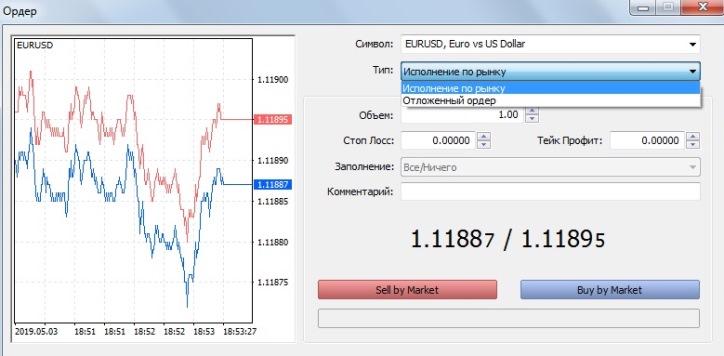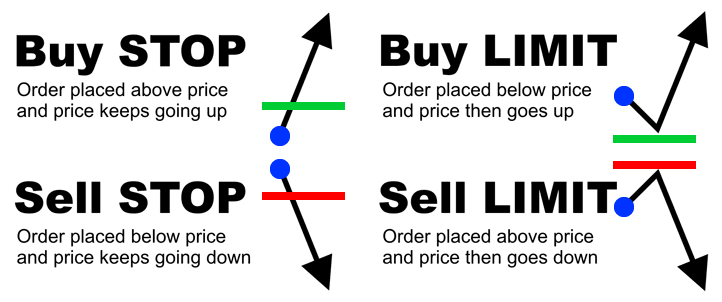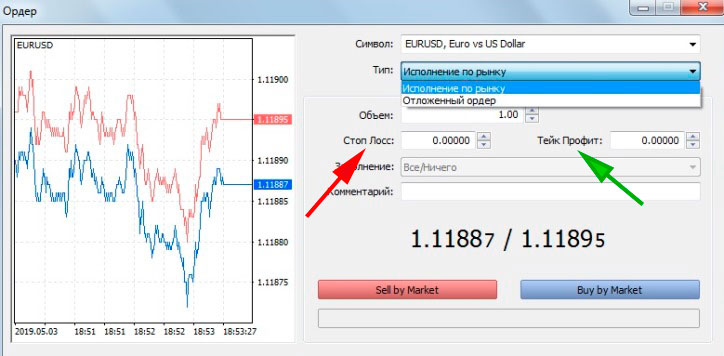Everything about Forex orders - main types, sizes and triggering features
Forex orders are the main instrument with which operations are carried out on the foreign exchange market; there are several types of orders, all of them are grouped by execution time and type.

Each performs its own functions and is triggered only when certain rules are met.
The main task of the trader is to correctly determine the time of use of a particular order and set the initial parameters.
In addition, there is a certain category of orders that do not open transactions on their own, but serve only as an addition to already open positions.
Proper use of all available options can significantly increase the efficiency of Forex trading.
Types of Forex trading orders
1. Based on execution time , Forex orders are divided into instant (by market) and pending:

Instant - execution occurs immediately after the trader sends an order, the speed of execution of such an order depends only on the technical parameters of the line provided by your trader, usually from 0.1 to 1 second.
Depending on the execution type that is set by your broker, the order to open a trade can be executed at the market price or only at the stated price.
In the first option, you independently set the planned deviation level, and in the second, the transaction is opened only if the quote of the currency pair has not yet changed.
Also, when opening an order on Forex, sometimes you can specify the permissible size of deviation from the stated price, for example 5 points, in this case the position will be opened even if the price changes, but by no more than 5 points.
Pending – Forex orders are executed only after certain conditions are met, these could be time or price level.
When placing this type of order, in addition to the direction of the transaction, a price level is also laid down, upon crossing which the transaction will be opened.
Such orders can be of several types:
- According to the trend - Buy Stop and Sell Stop, which are set in the direction of the existing trend.
- Against the trend - Buy Limit and Sell Limit in anticipation of a reversal or the end of the correction.
- Buy Stop Limit and Sell Stop Limit are combinable Forex orders that combine the properties of the two above mentioned.
 2. Forex stop orders - their main purpose is to reduce possible losses on already open positions or to fix profits.
2. Forex stop orders - their main purpose is to reduce possible losses on already open positions or to fix profits.

Stop loss is the most popular and most frequently used order; its task is to instantly close a losing trade, thereby reducing the amount of possible losses.
After setting it, the price level is set at which the position will be closed without fail. For long positions the order is placed below the opening level, for short positions above this level.
It should be noted that most traders limit the minimum stop loss size to 20-30 points.
Trailing stop is a variant of a floating stop loss order, the minimum value is 15 points. It helps to get the maximum possible profit if the transaction has entered the no-loss zone.
This order makes it possible to move the stop towards profit; the order is triggered if the price begins to move against the open position.
This stop option only works if the trader's terminal is turned on; for autonomous operation, a standard stop loss order should be placed. Or use a trading platform installed on a virtual server.
Learn more about setting trailing stops here - http://time-forex.com/praktika/kak-vystavit-trejling-stop
Take profit – is used to fix the profit already received, the size is calculated depending on the dynamics of price movement, based on the results of the forecasts.
When placing pending orders on Forex, you should take into account that different brokers have different triggering techniques; sometimes in order to execute an order it is necessary for the price to cross the planned level at least several times.
